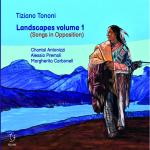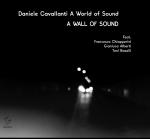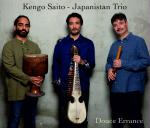

In India, the term «Jugalbandi» refers to a duet between master musicians. But Together is not just a meeting of musical personalities, however esteemed. Because this time facing off, in a performance recorded live in Chennai in 1995, are two whole philosophies of Indian music, the Hindustani tradition from the North and the Carnatic from the south, represented respectively by Hariprasad Chaurasia and Dr. N. Ramani, two men widely acknowledged as the greatest living exponents of their instrument: the bansuri (or venu) terms which describe the various types of bamboo flute sacred to the god Krishna.
As is often the case with Indian classical musicians, Ramani, born in 1934 in Tiruvarur in the Tamil Nadu region of Southern India, hails from a musical family. He also had an exceptional teacher in the late Mali, an eccentric genius who immediately recognized the child's prodigious talents and persuaded him to follow him to Madras (now Chennai) to refine and perfect his technique. But if Mali's generous teachings have undoubtedly played a major part in shaping Ramani's style, he has at the same time evolved away from the master's model of to forge his own highly refined and personal idiom.
Hariprasad Chaurasia, meanwhile, was born in 1928 the North of India, in Allahabad, Uttar Pradesh. Moving first to Benares and then to Bombay where he studied with Annapurna Devi (then wife of Ravi Shankar) Chaurasia is today one India's best loved instrumentalists and among the most internationally renowned figures in Indian music.
On this disc Ramani and Chaurasia present two ragas.
The first is the magnificent Carnatic Hindolam which has a Hindustani equivalent called Malkauns. The two musicians slide effortlessly into a frugivorous dialogue in which each, rather than seeking obvious points of contact, fully exploits the differences in his own instrument's tonality and playing style. The raga thus slowly takes shape in an uninterrupted flux of splendid melodies, tonal shadings and embellishments. The spell remains unbroken even with the introduction of a lengthy percussion excursus involving mridangam and tabla that dominates the second part of the piece and that continues on the second raga, Pahadi, a piece resplendent with ecstatic atmospheres of an astounding simplicity that seem to tap into the very source of nature and on which the dialogue between Chaurasia and Ramani becomes denser still.


Dr N Ramani flute
Hariprasad Chaurasia flute
Turuvarar Bhaktavatsalam mridangam
Anindo Chatterjee tabla

Our Playlist
Our olaylist on Spotify, dedicated to P
re Minimalism, Minimalism and Post Minimalism.
© 2025 Felmay Srl - P.I. 06974300011 | Powered by: Riccardo Marino
























